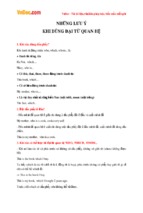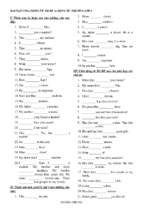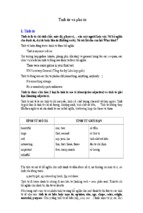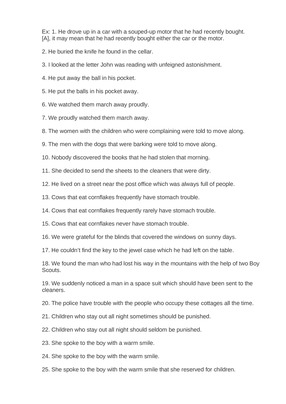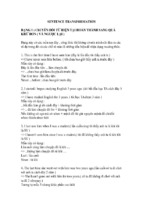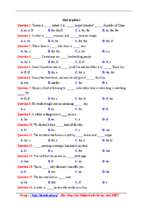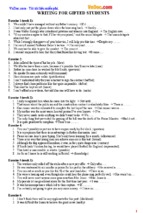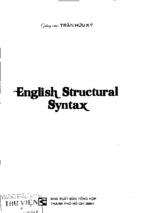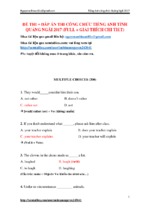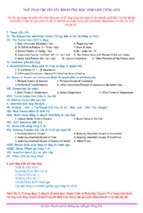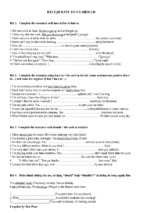Banking: An Introduction
Prof. Dr AP Faure
Download free books at
AP Faure
Banking: An Introduction
Download free eBooks at bookboon.com
2
Banking: An Introduction
1st edition
© 2013 Quoin Institute (Pty) Limited & bookboon.com
ISBN 978-87-403-0596-8
Download free eBooks at bookboon.com
3
Banking: An Introduction
Contents
Contents
1
Essence of banking
7
1.1
Learning outcomes
7
1.2 Introduction
7
1.3
The financial system
8
1.4
Principles of banking
19
1.5
The balance sheet of a bank
29
1.6 Bibliography
39
2
Money creation
41
2.1
Learning objectives
41
2.2 Introduction
41
2.3
What is money?
42
2.4
Measures of money
44
2.5
Monetary banking institutions
45
2.6
Money and its role
46
2.7
Uniqueness of banks
47
2.8
The cash reserve requirement
51
www.sylvania.com
We do not reinvent
the wheel we reinvent
light.
Fascinating lighting offers an infinite spectrum of
possibilities: Innovative technologies and new
markets provide both opportunities and challenges.
An environment in which your expertise is in high
demand. Enjoy the supportive working atmosphere
within our global group and benefit from international
career paths. Implement sustainable ideas in close
cooperation with other specialists and contribute to
influencing our future. Come and join us in reinventing
light every day.
Light is OSRAM
Download free eBooks at bookboon.com
4
Click on the ad to read more
Banking: An Introduction
Contents
2.9
Money creation does not start with a bank receiving a deposit
52
2.10
Money creation is not dependent on a cash reserve requirement
63
2.11
Is “money supply” a misnomer?
65
2.12
The money identity and the creation of money
66
2.13
Role of the central bank in money creation
68
2.14
How does a central bank maintain a bank liquidity shortage?
69
2.15 Bibliography
71
3
Risk in banking
72
3.1
Learning outcomes
72
3.2 Introduction
72
3.3
The concept of risk
73
3.4
Interest rate risk
75
3.5
Market risk
3.6
Liquidity risk
3.7.
Credit risk
3.8
Currency risk
3.9
Counterparty risk
3.10
Operational risk
360°
thinking
.
3.11 Bibliography
84
86
93
99
102
103
107
360°
thinking
.
360°
thinking
.
Discover the truth at www.deloitte.ca/careers
© Deloitte & Touche LLP and affiliated entities.
Discover the truth at www.deloitte.ca/careers
© Deloitte & Touche LLP and affiliated entities.
Download free eBooks at bookboon.com
Deloitte & Touche LLP and affiliated entities.
Discover the truth
5 at www.deloitte.ca/careers
Click on the ad to read more
© Deloitte & Touche LLP and affiliated entities.
Dis
Banking: An Introduction
Contents
4 �Bank models & prudential requirements
109
4.1
Learning outcomes
109
4.2 Introduction
109
4.3
Bank models
110
4.4
Rationale, objectives & principles of regulation
4.5
Prudential requirements
38
120
129
4.6 Bibliography
141
5 Endnotes
143
We will turn your CV into
an opportunity of a lifetime
Do you like cars? Would you like to be a part of a successful brand?
We will appreciate and reward both your enthusiasm and talent.
Send us your CV. You will be surprised where it can take you.
Send us your CV on
www.employerforlife.com
Download free eBooks at bookboon.com
6
Click on the ad to read more
Banking: An Introduction
Essence of banking
1 Essence of banking
1.1
Learning outcomes
After studying this text the learner should / should be able to:
1. Describe the context of banking: the financial system.
2. Explain the principles of banking.
3. Elucidate the broad functions of banks.
4. Analyse and explain the basic raison d’être for banks.
5. Describe the components of the balance sheets of banks.
6. Elucidate the liability and asset portfolio management “problem” of banks.
1.2 Introduction
Private sector banks play a significant role in the financial system and the real economy. They intermediate
between all sectors of the economy and other financial intermediaries and institutions, and some of them
provide the payments system, which most of us use every day.
Banks are unique in that their liabilities, bank notes and coins (N&C – central bank) and deposits (BD –
private sector banks) are regarded as the means of payments / medium of exchange, which is the definition
of money. So, put simply M31 = N&C + BD (held by the domestic non-bank private sector (NBPS).
Because of this, banks are able to create additional money when required by individuals, businesses
and government (with the assistance of the central bank). This unique feature, plus their balance sheet
structure, places banks in a unique position in another way: they are inherently unstable, and therefore
require robust regulation and supervision.
Banks are innovative, largely a function of intense competition, and they are therefore at the forefront of
new developments, not only in banking but also in the wider financial markets. This makes regulation
and supervision complex.
Download free eBooks at bookboon.com
7
Banking: An Introduction
Essence of banking
In essence, banks are straightforward institutions: they take existing deposits (and loans to a small degree)
and loan these funds, and, at the same time, make new loans and create new deposits (new money).
However, while their basic function may be simple, the risks they assume are not, and this makes them
complex. This text aims to cover banking in a comprehensible manner, and the following are the sections:
• Essence of banking.
• Money creation.
• Risks in banking.
• Bank models & prudential requirements.
This section serves as introduction to banking and offers the following sections:
• The financial system.
• Principles of banking.
• The balance sheet of a bank.
1.3
The financial system
Figure 1: simplified financial system
1.3.1 Introduction
Direct investment / financing
ULTIMATE
BORROWERS
(def icit economic
units)
ULTIMATE
LENDERS
Securities
(surplus economic
units)
Surplus funds
HOUSEHOLD
SECTOR
CORPORATE
SECTOR
GOVERNMENT
SECTOR
HOUSEHOLD
SECTOR
FINANCIAL
Securities
INTERMEDIARIES
Surplus funds
Securities
Surplus funds
FOREIGN
SECTOR
CORPORATE
SECTOR
GOVERNMENT
SECTOR
FOREIGN
SECTOR
Indirect investment / financing
Figure 1: simplified financial system
Download free eBooks at bookboon.com
8
Banking: An Introduction
Essence of banking
It may be useful to introduce the subject of private sector banking by briefly describing the financial
system, thus contextualising banking. The financial system may be depicted simply as in Figure 1. It is
essentially concerned with borrowing and lending and has six parts or elements (not all of which are
visible in Figure 1):
• First: lenders (surplus economic units) and borrowers (deficit economic units), i.e. the nonfinancial-intermediary economic units that undertake lending and borrowing. They may
also be called the ultimate lenders and borrowers (to differentiate them from the financial
intermediaries who do both). Lenders try and earn the maximum on their surplus money and
borrowers try and pay the minimum for money borrowed.
• Second: financial intermediaries, which intermediate the lending and borrowing process; they
interpose themselves between the ultimate lenders and borrowers and endeavour to maximise
profits from the differential between what they pay for liabilities (borrowings) and earn on assets
(overwhelmingly loans). In the case of the banks this is called the bank margin. Obviously, they
endeavour to pay the least on deposits and earn the most on loans. (This is why you must be on
your guard when they make you an offer for your money or when they want to lend to you.)
• Third: financial instruments, which are created to satisfy the financial requirements of the various
participants. These instruments may be marketable (e.g. treasury bills) or non-marketable (e.g.
a utilised bank overdraft facility).
• Fourth: the creation of money when demanded. As you know banks (collectively) have the
unique ability to create their own deposits (= money) because we the public generally accept
their deposits as a means of payment.
• Fifth: financial markets, i.e. the institutional arrangements and conventions that exist for the
issue and trading (dealing) of the financial instruments.
• Sixth: price discovery, i.e. the price of shares and the price of debt (the rate of interest) are
“discovered”, i.e. made and determined, in the financial markets. Prices have an allocation of
funds function.
We need to present you with a little more information on these six elements.
1.3.2
Lenders and borrowers
The first element is lenders and borrowers. As seen in Figure 1, they can be categorised into the four
groups or “sectors” of the economy:
• Household sector (= individuals).
• Corporate sector (= companies – private and government owned).
• Government sector = all levels of government – local, provincial, central).
• Foreign sector (= any foreign entity – corporate sector, financial intermediaries such as
retirement funds).
Download free eBooks at bookboon.com
9
Banking: An Introduction
Essence of banking
The members of these sectors may be either lenders or borrowers or both at the same time. For example,
a member of the household sector may have a mortgage bond (= borrower by the issue of a nonmarketable debt instrument) and at the same time hold a balance on your accounts at the bank (= a
lender; a holder of money).
1.3.3
Financial intermediaries
The second element is financial intermediaries. As seen in Figure 1, lending and borrowing takes place
either directly between ultimate lenders and borrowers [e.g. when an individual buys a share (also called
equity or stock) issued by a company], or indirectly via financial intermediaries. Financial intermediaries
essentially solve the differences (or conflicts) that exist between ultimate lenders and borrowers in terms
of their requirements: size, risk, return, term of loan, etc.
An example: your friend Johnny (a member of household sector) has LCC2 10 000 he would like to lend
out (= invest) for 30 days at low risk. You (a member of household sector) would like to borrow LCC
20 000 for 365 days to buy a car. You don’t mind who you borrow from, because you represent the risk,
not the lender. Your and Johnny’s requirements don’t match at all; direct financing won’t work. He places
his LCC 10 000 on deposit with a prime bank for 30 days and you borrow LCC 20 000 from the bank
for 365 days. You and Johnny are both in high spirits; the bank satisfied your different requirements.
Financial intermediaries exist not only because of the divergence of requirements of lenders and
borrowers, but for the specialised services they provide, such as insurance policies (insurance companies),
retirement fund products (retirement funds), investment products (securities unit trusts, exchange traded
funds), overdraft and deposit facilities (banks), and so on. The banks also provide a payments system,
the system we don’t see but rely much on. The central bank provides an interbank settlement system
(as we will see later).
Figure 2: financial intermediaries
CENTRAL
BANK
ULTIMATE
BORROWERS
Interbank
debt
ULTIMATE
LENDERS
Deposits
BANKS
HOUSEHOLD
SECTOR
CORPORATE
SECTOR
GOVERNMENT
SECTOR
FOREIGN
SECTOR
Interbank
debt
Debt
Debt & shares
Debt & shares
BANKS
QFIs:
DFIs, SPVs,
Finance co’s
Investment co’s
Debt
Debt & shares
Deposits
Debt & shares
Debt & shares
Figure 2: financial intermediaries
Download free eBooks at bookboon.com
10
HOUSEHOLD
SECTOR
INVESTMENT
VEHICLES
CORPORATE
SECTOR
CIs
Debt
CISs
AIs
Investment
vehicle securities
(Pis)
GOVERNMENT
SECTOR
FOREIGN
SECTOR
Banking: An Introduction
Essence of banking
The main financial intermediaries that exist in most countries and their relationships with one another
are presented in Figure 2. A useful of classification of them is presented in Box 1. Note that the nondeposit intermediaries may also be seen as investment vehicles. Their products (= their liabilities), which
can be called participation interests (PIs), are designed as investments for the household sector (and in
some cases other financial intermediaries).
1.3.4
Financial instruments
The third element is financial instruments. They are also called securities; borrowers issue securities. They
are therefore evidences of debt or shares. They also represent claims on the issuers / borrowers.
Ultimate lenders exchange money (deposits) for securities and ultimate borrowers exchange (issue
new) securities for money. Financial intermediaries issue their own securities (e.g. deposits) and hold
the securities of the ultimate borrowers (e.g. treasury bills). As you know, the banks have a special and
unique role in this market for money in that they are able to create money (bank deposits) by making
new loans (buying new securities).
Securities offer a return that is fixed (fixed-interest debt) or variable (variable-rate debt and share
dividends). The capital amount of shares and debt is paid back after a period (bonds and preference
shares) or not ever (perpetual bonds and shares). Securities are also either marketable of non-marketable.
This is discussed in more detail in the next section.
Box 1: financial intermediaries
MAINSTREAM FINANCIAL INTERMEDIARIES
DEPOSIT INTERMEDIARIES
Central bank (CB)
Private sector banks
NON-DEPOSIT INTERMEDIARIES (INVESTMENT VEHICLES)
Contractual intermediaries (CIs)
Insurers
Retirement funds (pension funds, provident funds, retirement annuities)
Collective investment schemes (CISs)
Securities unit trusts (SUTs)
Property unit trusts (PUTs)
Exchange traded funds (ETFs)
Alternative investments (AIs)
Hedge funds (HFs)
Private equity funds (PEF’s)
QUASI-FINANCIAL INTERMEDIARIES (QFIs)
Development finance institutions (DFIs)
Special purpose vehicles (SPVs)
Finance companies
Investment trusts / companies
Micro lenders
Download free eBooks at bookboon.com
11
Banking: An Introduction
Essence of banking
Figure 3:system
financial
& instruments
/ securities
The instruments of the financial
areintermediaries
shown in Figure
3 and outlined
below.
CENTRAL
BANK
Interbank
debt
ULTIMATE
BORROWERS
(def icit economic
units)
HOUSEHOLD
SECTOR
CORPORATE
SECTOR
• CDs =
NCDs &
NNCDs
BANKS
• Debt = NMD
Interbank
debt
• Shares
• Debt
GOVERNMENT
SECTOR
• Debt = MD (bills, bonds)
FOREIGN
SECTOR
• Shares
• Debt = MD (CP, bonds)
• CDs =
NCDs &
NNCDs
BANKS
• Shares = MD & NMD
• Debt = MD (CP, BAs,
bonds) & NMD
QFIs:
DFIs, SPVs,
Finance
Co’s, etc
• Shares
• Debt
ULTIMATE
LENDERS
• CDs
(surplus economic
units)
• CDs
• Debt = MD (CP, bonds)
& NMD
INVESTMENT
VEHICLES
CIs
CISs
AIs
• Investment
vehicle
securities
(PIs)
HOUSEHOLD
SECTOR
CORPORATE
SECTOR
GOVERNMENT
SECTOR
FOREIGN
SECTOR
• Shares
• Debt
MD = marketable debt; NMD = non-marketable debt; CP = commercial paper; BAs= bankers’ acceptances; CDs = certif icates of deposit (= deposits ); NCDs = negotiable certif icates of
deposit; NNCDs = non-negotiable certif icates of deposit; foreign sector issues f oreign shares and f oreign MD (f oreign CP & f oreign bonds); PI = participation interest (units)
Figure 3: financial intermediaries & instruments / securities
There are two categories of financial instruments:
• Debt (and deposits).
• Shares.
I joined MITAS because
I wanted real responsibili�
I joined MITAS because
I wanted real responsibili�
Real work
International
Internationa
al opportunities
�ree wo
work
or placements
�e Graduate Programme
for Engineers and Geoscientists
Maersk.com/Mitas
www.discovermitas.com
Ma
Month 16
I was a construction
Mo
supervisor
ina const
I was
the North Sea super
advising and the No
he
helping
foremen advis
ssolve
problems
Real work
he
helping
fo
International
Internationa
al opportunities
�ree wo
work
or placements
ssolve pr
Download free eBooks at bookboon.com
12
�e G
for Engine
Click on the ad to read more
Banking: An Introduction
Essence of banking
The instruments of debt and shares and their issuers are as follows:
The household sector issues:
• Non-marketable debt (NMD) securities
-- Examples: overdraft loan from a bank; mortgage loan from a bank.
The corporate sector issues:
• Share securities (marketable = listed & non-marketable = non-listed)
-- Ordinary shares (aka common shares).
-- Preference shares (aka preferred shares).
• Debt securities
-- Non-marketable debt (NMD).
-- Marketable debt (MD)
■■ Examples: corporate bonds, commercial paper (CP), bankers’ acceptances (BAs),
promissory notes (PNs).
The government sector issues:
• Marketable debt (MD) securities
-- Treasury bills (aka TBs and T-bills).
-- Bonds (aka T-bonds).
The foreign sector issues (into the local markets):
• Foreign share securities (inward listings).
• Foreign debt securities (inward listings).
The deposit financial intermediaries (central and private sector banks) issue:
• Deposit securities
-- Central bank
■■ Non-negotiable certificates of deposit (NNCDs).
■■ Notes and coins.
■■ Central bank securities3.
-- Private sector banks
■■ Non-negotiable certificates of deposit (NNCDs).
■■ Negotiable certificates of deposit (NCDs).
■■ Loans (mainly from the central bank).
Download free eBooks at bookboon.com
13
Banking: An Introduction
Essence of banking
The quasi-financial intermediaries issue:
• Debt securities
-- Non-marketable debt (NMD)
■■ Example: utilised overdraft facility.
-- Marketable debt (MD)
■■ Examples: bonds, commercial paper (CP)
The above may be summarized as in Table 2.
As we have indicated, it is rare that the individual invests in these financial instruments (the exceptions
are bank deposits in the form of NNCDs and shares). Rather, they invest in these ultimate financial
instruments via the investment vehicles, by buying their PIs.
Download free eBooks at bookboon.com
14
Click on the ad to read more
Banking: An Introduction
Essence of banking
Debt & deposits
Non-marketable debt
& deposits
Shares
Nonmarketable
Marketable
debt & deposits
Non-listed
ordinary
shares*
Marketable
Listed
preference
shares
Listed ordinary
shares
ULTIMATE BORROWERS
Household sector
OD & mortgage
loans from banks
-
-
-
-
Corporate sector
OD & mortgage
loans from banks
Corp bonds, CP,
BAs, PNs
YES
YES
YES
Government
sector
OD loans from banks
Govt bonds,
TBs
-
-
-
Foreign sector
-
Foreign bonds
-
YES
(inward listing)
YES
(inward listing)
FINANCIAL INTERMEDIARIES
Central bank
NNCDs
NCDs**, notes
& coins
-
-
-
Private sector
banks
NNCDs
NCDs
-
-
-
Quasi-financial
intermediaries
OD loans from banks
Corp bonds, CP
-
-
-
Investment
vehicles
Participation
interests (PIs)
-
-
-
-
OD = overdraft); CP = commercial paper; BAs = bankers’ acceptances; PNs = promissory notes; Corp = corporate; NNCDs = nonnegotiable certificates of deposit; NCDs = negotiable certificates of deposit.
* Non-listed preference shares do exist but are rare. ** Central bank (CB) securities, which are akin to NCDs.
Table 2: financial instruments / securities
1.3.5
Financial markets
The fourth element of the financial system is financial markets. Financial markets are categorised
according to the securities issued by ultimate borrowers and financial intermediaries. It was noted
above that financial securities are either marketable or non-marketable. Examples are non-negotiable
certificates of deposit (NNCDs) (= an ordinary deposit receipt) and negotiable certificates of deposit
(NCDs) issued by the private sector banks.
There are two market types or forms (see Figure 4): primary market and secondary market. All securities
are issued in their primary markets and the marketable ones are traded in the secondary markets. In
the primary market the issuer receives the money paid by the lender / buyer. In the secondary market
the seller receives the money paid by the buyer.
Download free eBooks at bookboon.com
15
Banking: An Introduction
Figure 4: primary & secondary markets
Essence of banking
Primary market
Funds
LENDERS
the difference
BORROWERS
Securities
Secondary market
the difference
BUYERS
Funds
SELLERS
Securities
Figure 4: primary & secondary markets
Figure 5: financial markets
FOREIGN
FINANCIAL
MARKETS
ST debt
market
=
Money
market
Debt market
/ interestbearing
market /
fixed-interest
market
LOCAL
FINANCIAL
MARKETS
Forex market
= conduit
LT debt
market
Share
market
Marketable
part =
capital
market
Bond
market
Marketable
part =
Listed
share
market
Forex
market
=
conduit
FOREIGN
FINANCIAL
MARKETS
Figure 5: financial markets
There are a number of markets for financial instruments: the market for life policies (a primary market
only), the market for PIs (also called units) of securities unit trusts (a primary market and a partial
secondary market: the units are saleable to the issuer), the market for PIs in retirement funds (strictly a
primary market), the deposit market (primary market for NNCDs and a secondary market for NCDs),
the bond market (secondary market), and so on.
The financial markets are depicted in Figure 5. As we will show later, the money market should be defined
as the short-term debt market (STDM = marketable and non-marketable debt), while the bond market
is the marketable arm of the long-term debt market (LTDM).
Download free eBooks at bookboon.com
16
Banking: An Introduction
Essence of banking
The money market (STDM) and the LTDM together make up the debt market (also known as the interestbearing market and the fixed-interest market). The terms interest-bearing and fixed-interest oppose the
debt market from the share market because the returns on shares are dividends and dividends are not
fixed – they depend on the performance of companies. The LTDM and the share market is called the
capital market.
The foreign exchange market is not a financial market, because lending and borrowing do not take place
in this market. Rather, it is a conduit for foreign investors into local financial markets and for local
investors into foreign financial markets.
In addition to these cash or spot markets [where the settlement of deals takes place a few days after
transaction date (T+0)] we have the so-called derivative markets. They are comprised of instruments
(forwards, futures, swaps, options and “others” such as weather derivatives) that are derived from and get
their value from the spot financial markets. Whereas cash markets settle as soon as possible, derivative
markets settle at some stage in the future.
Download free eBooks at bookboon.com
17
Click on the ad to read more
Banking: An Introduction
Essence of banking
Figure 6: financial markets
BROKERDEALERS
FINANCIAL MARKETS
ULTIMATE
BORROWERS
(def icit economic
units)
Securities
Securities
Surplus f unds
Surplus f unds
FINANCIAL
MARKETS
Securities
Surplus f unds
FINANCIAL
INTERMEDIARIES
Securities
FINANCIAL
MARKETS
ULTIMATE
LENDERS
(surplus economic
units)
Surplus f unds
Figure 6: financial markets
Secondary markets are either over-the-counter (OTC), also called “informal markets” (such as the foreign
exchange and the money markets) because there is no exchange involved, or exchange-driven (or formal)
markets, such as the share (or stock) exchange. The place of the financial markets in the financial system
may be depicted as in Figure 6.
The financial markets do not intermediate the financial lending and borrowing process as do financial
intermediaries such as banks; they merely facilitate the primary and secondary markets.
1.3.6
Money creation
The fifth element is creation of money. As this is covered in detail later, we will not give it much attention
here. Here follows a brief summary: when banks make new loans / provide new credit (= buy NMD,
MD and shares), they create NBPS deposits (= money).
The referee in this game is the central bank which controls the growth rate in money creation (= new
bank deposits resulting from new bank loans) by means that differ from country to country (which are
elucidated later). The principal method is the interest rate on banks’ loans (= bank assets) via the central
bank’s KIR interest rate, which influences the cost of bank liabilities (i.e. via the bank margin).
1.3.7
Price discovery
The sixth element is price discovery. Primary and secondary markets are important for a number
of reasons, the most important of which is price discovery, i.e. the establishment of interest rates for
various terms and the prices of shares. Interest rates, as we will see, have an important role to play in
the pricing of all assets. The central bank plays a significant role in the establishment of interest rates.
These significant issues are addressed later.
Download free eBooks at bookboon.com
18
Banking: An Introduction
1.3.8
Essence of banking
Allied participants on the financial system
From the above discussion it will be evident that there are a number of allied participants on the financial
system. By this we mean participants other than the principals (those who have financial liabilities or
assets or both). As we now know, the principals are:
• Lenders.
• Borrowers.
• Financial intermediaries.
The allied participants, who play a major role in terms of facilitating the lending and borrowing process
(the primary market) and the secondary markets are the financial exchanges and their members. Also we
need to mention the fund managers, who are actively involved in sophisticated financial market research
and therefore play a major role price discovery, and the regulators of the financial markets. Thus the
allied non-principal participants in the financial markets are:
• Financial exchanges.
• Broker-dealers.
• Fund managers.
• Regulators.
1.4
Principles of banking
1.4.1 Introduction
The previous section presented the banking sector in the context of the financial system. This section
goes a little further and covers:
• Fundamental issues in banking.
• Basic raison d’être for banks: information costs and liquidity.
• Broad functions of banks.
1.4.2
Fundamental issues in banking
Banks are unique financial intermediaries.4 They are the only intermediaries that intermediate between
all ultimate lenders and borrowers and all other non-bank financial intermediaries. In this way they
perform crucial functions, including providing the means of payments. In fact, they are such significant
intermediaries that their very survival (particularly the large banks) is in the interests of the country;
there exist social costs to their failure.
Download free eBooks at bookboon.com
19
Banking: An Introduction
Essence of banking
For this reason, banks are the most regulated intermediaries. In most countries the central bank regulates
and supervises the banks, and they are obliged to have large departments and skilled persons to carry out
this function. The banks are innovative and create new products continually, because of the competitive
nature of banking, making the task of the supervisor challenging.
The hardware and software systems requirements of banks are sophisticated, not only because of the
complex deals they undertake, but to cater for the strict and diverse reporting requirements of banks.
This and the high capital resource requirements create substantial barriers to entry.
Banks exist because of the information costs they carry and because of the demand for liquidity by deposit
clients. Banks earn their keep by the management of financial risks, and this is what differentiates them
from other companies. Essentially, they are risk managers. According to Heffernan5, the “organisation of
risk management within a bank is as important as the development of risk management techniques and
instruments to facilitate risk management…. There is no such thing as a generic banking strategy. But
banks need to be planning how, in the future, existing competitive advantage is going to be sustained
and extended. The outlook for banks is optimistic, provided they can create, maintain, and sustain a
competitive advantage in the products and services (old and new) they offer.”
Download free eBooks at bookboon.com
20
Click on the ad to read more
- Xem thêm -


